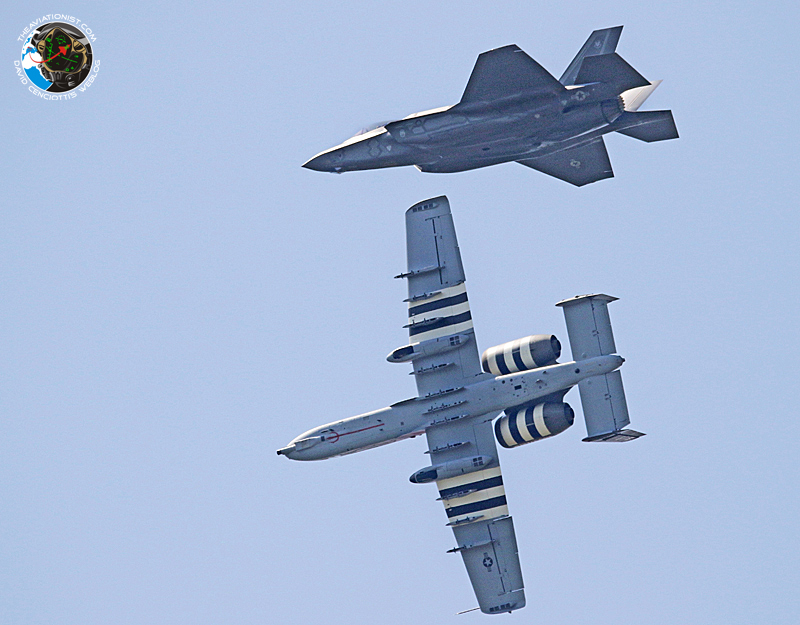F-35A Mini-Heritage Flight and First Lightning II at Selfridge ANGB for 100th Anniversary.
The USAF F-35A Lightning II made history again this past weekend when it visited Selfridge Air National Guard Base for the first time during the 100th Anniversary Airshow in Mt. Clemens, Michigan near Detroit in the United States.
As a potential future base for the F-35A, Selfridge and the F-35As from Hill AFB put together an impressive airshow with several pleasant surprises.
The highlight was the special D-Day paint scheme A-10 from Selfridge joining a visiting Hill AFB F-35A for a Heritage Flight formation demo on Sunday.
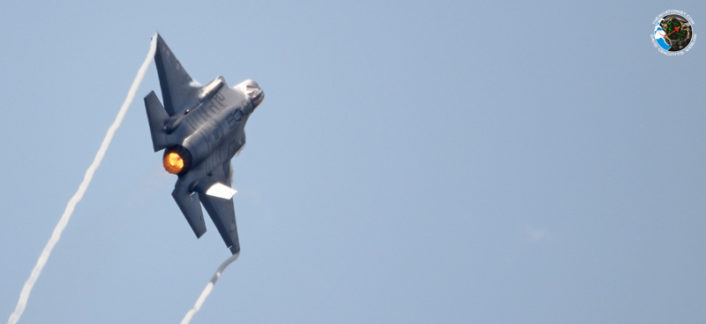
The Aviationist.com spoke with F-35A Lightning II pilot, U.S. Air Force Lt. Col. Dave DeAngelis who flew to Selfridge ANGB in one of two F-35As for the 100th anniversary show. Lt. Col. DeAngelis is a member of the 466th Fighter Squadron at Hill AFB, the nation’s first operational Air Force Reserve F-35A unit.
The 466th Fighter Squadron has been exceptionally busy since declaring Initial Operational Capability on the F-35A back in August 2016. The unit has already exceeded and met several milestones for the F-35A program. The Aviationist.com asked Lt. Col. DeAngelis how the Hill AFB, Utah F-35As have performed so well.
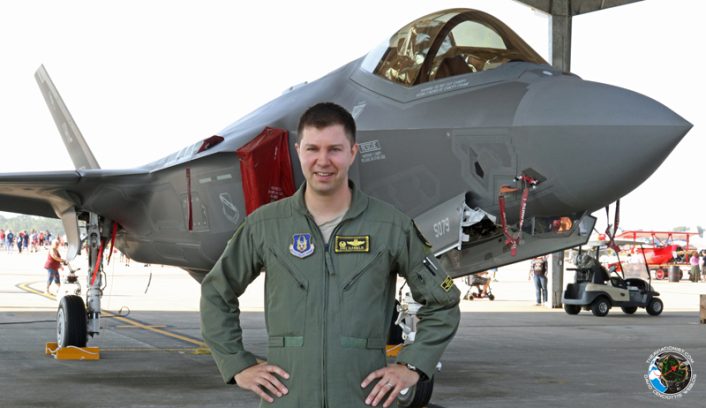
“We’ve got great maintenance staff. I’d have to give those guys much of the credit. We made IOC (Initial Operating Capability) back in August 2016. The program has done much better than I anticipated. It has just been doing phenomenal, the month of August, this month, we are at 2% attrition rate. That is unheard of. Some unit attrition rates are at about 20%. If your name is on the flying schedule, you’re flying a jet. The jet is extremely maintainable.”
As testimony to Lt. Col. DeAngelis’ remarks about the F-35A’s maintainability we watched maintainers run checks and perform routine maintenance on both aircraft using fast, easy to use electronic diagnostic equipment plugged into the jet.ù
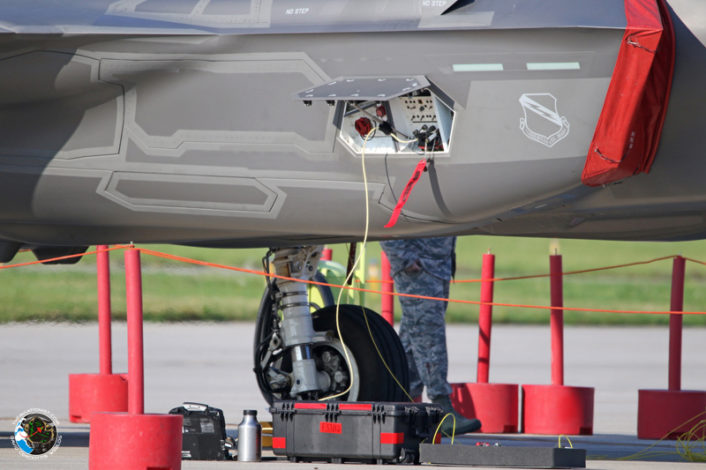
Lt. Col. DeAngelis, a former F-16 pilot, went on to tell us he was impressed with the F-35A’s operational combat capability during exercises that closely simulate the rigors of real-world combat.
“We just finished a Combat Archer and Combat Hammer and the results have been phenomenal. We were shooting live missiles, dropping live bombs out at the Utah test range last week. It has really taken off in the last year. These jets have just been performing great.”
The 466th Fighter Squadron and their F-35A’s made the news earlier this year when they deployed jets to the ETO (European Theater of Operations) in another operational milestone for the USAF’s contribution to the Joint Strike Fighter program.
“As part of our European response initiative we took eight aircraft to England, based out of Lakenheath for a couple of weeks and also did some trips through Europe. We brought some F-35s to Estonia, brought some F-35s to Bulgaria to reassure our European allies.”
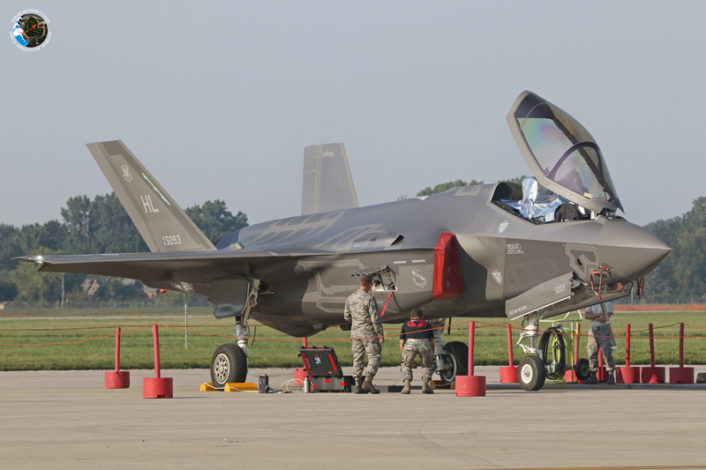
When we asked Lt. Col. DeAngelis about his transition training from F-16 to F-35A and his first flights he spoke with enthusiasm about the new jet.
“It flies pretty similar to an F-16. Maybe after 100 hours you’re pretty comfortable deploying it in combat. It’s a great aircraft overall.”
When pressed about why the Air Force F-35A’s have not flown aerobatic displays in the U.S. as seen this summer in Paris, France when an F-35A performed a demo with a company pilot, Lt. Col. DeAngelis told us, “Right now we are focused on combat capability. We’re an operational combat squadron. We’ll do Heritage Flights, but we’re focused on finding and destroying an enemy. The aerobatics, right now, Lockheed has that covered. But I think eventually as the program matures we’ll probably train up a demonstration pilot.”
One of each of the two F-35As flown into Selfridge were displayed under an aircraft shade for static viewing and on the hot ramp before and after demo flights providing great photo opportunities with both jets.
Selfridge ANGB Public Relations MSgt. David Kujawa provided us with access to flight crews for interviews. With strong public support for the F-35A being based at Selfridge and the economic benefits it will provide to the region if selected there was considerable excitement surrounding the first-ever arrival and flight of the F-35A at Selfridge.
The event brought another chapter to the long and impressive history of the 100-year old Selfridge ANGB.


